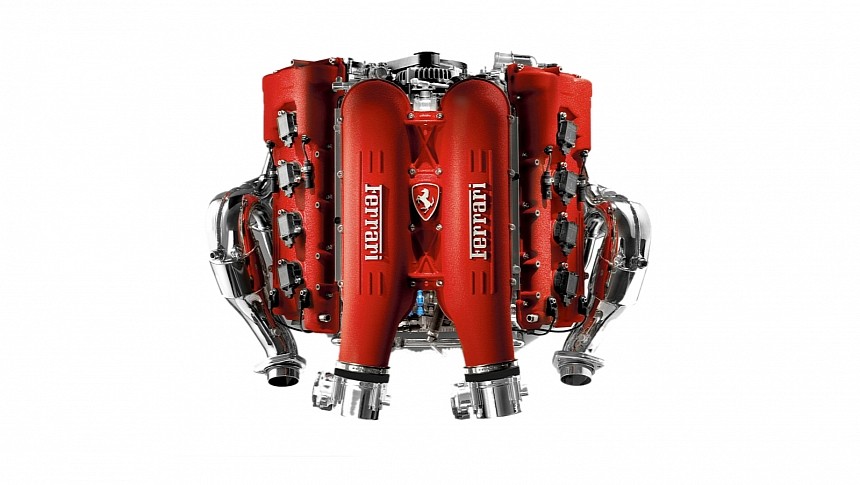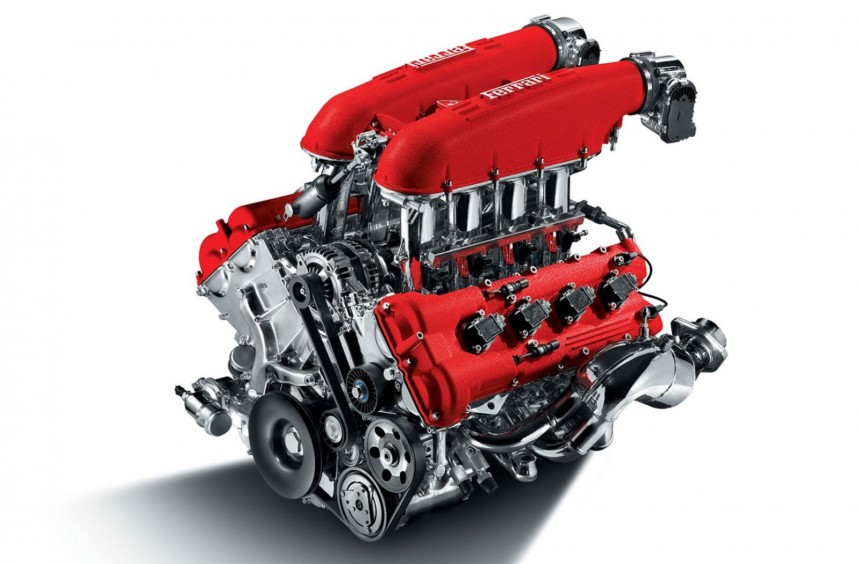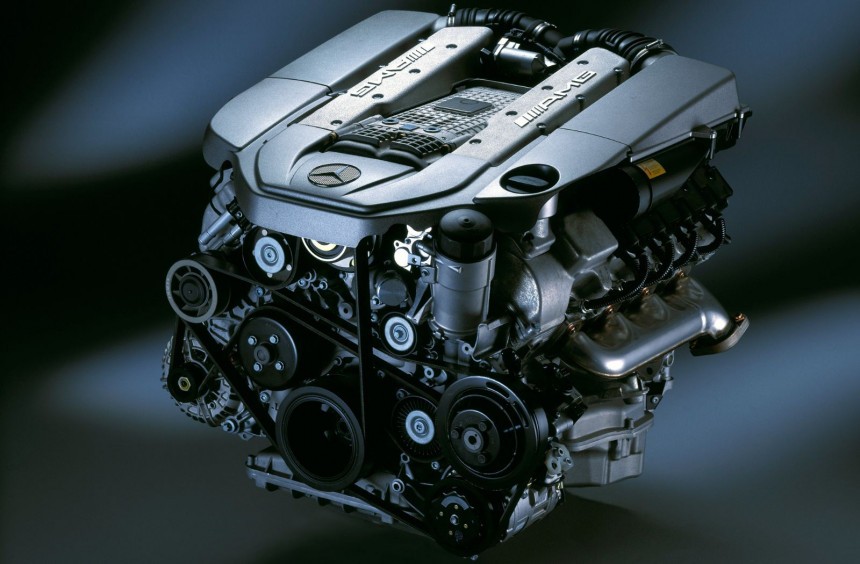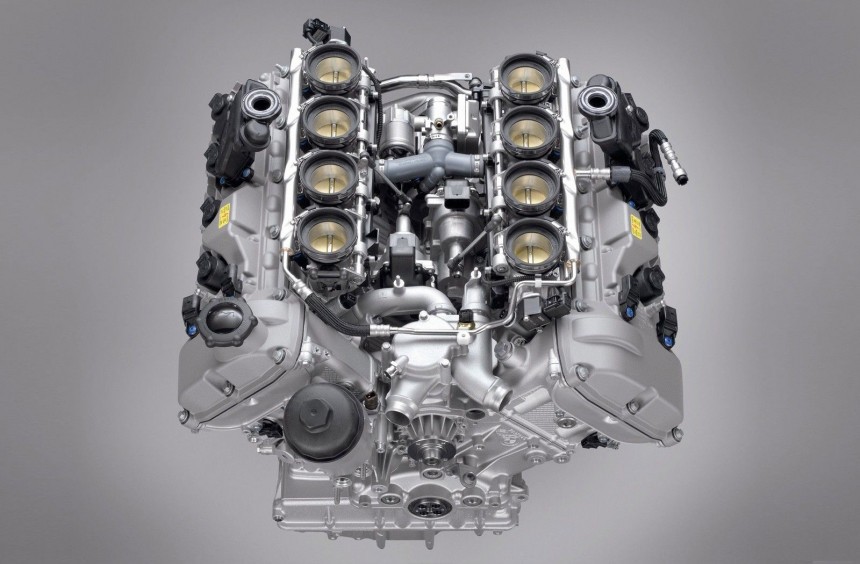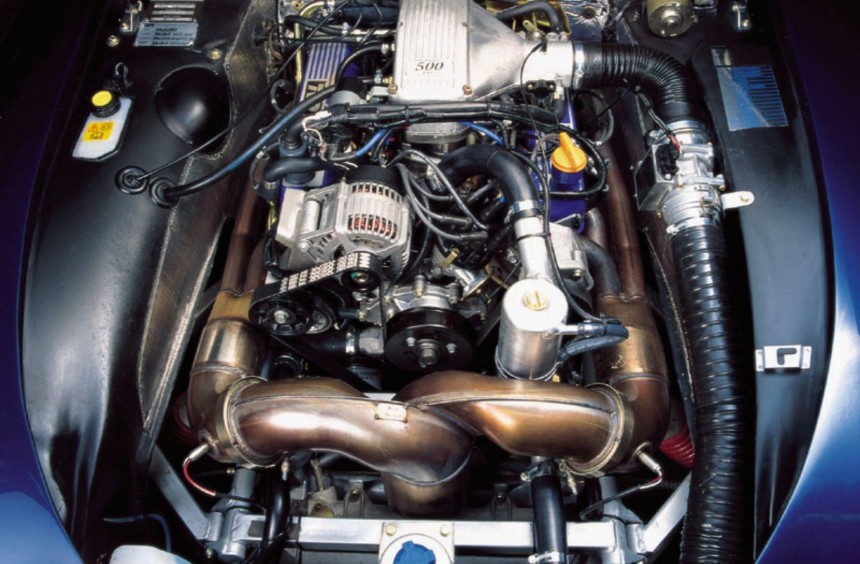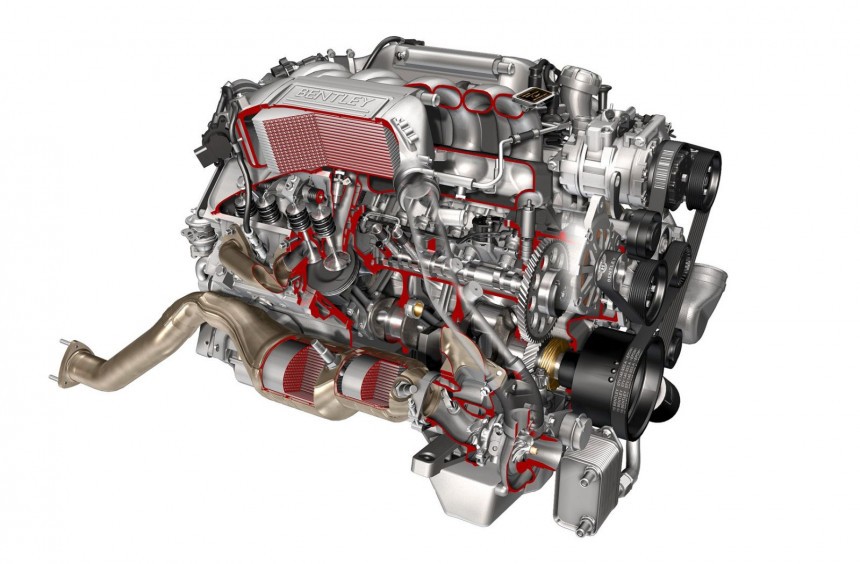Take every single list of the greatest V8 engines ever put together, and you'll find at least two US-build units in the Top 3. However, European carmakers have also mass-produced some legendary V8s.
When I say V8, the image of a bright orange block instantly seeps into my brain, while the unmistakable rumble of a 426 HEMI starts ringing in my ears.
During the 1960s, American manufacturers were responsible for producing some of the most legendary V8s and, by making them available to the masses, propelled the engine configuration to engineering stardom.
Furthermore, US carmakers solidified their place as the world's leading V8 manufacturers with modern series like GM's LS small-blocks, Chrysler's third-gen HEMIs, and Ford's Modular.
But, the V8, which was born in France a century ago, was also taken close to high-performance perfection by German, British, or Italian carmakers.
The F136 was designed in Maranello by Ferrari during the late 1990s as a successor to the F131 "Dino" V8. However, it debuted under the hood of the Maserati Coupe and Spider models in 2001.
Produced for over 15 years, it was used by the two companies in a wide range of models, with both developing distinct versions for their models throughout the years. The F136 even powered an Alfa Romeo, the 8C Competizione.
Displacing between 4.2 and 4.7 liters, the naturally aspirated V8 featured an aluminum block and heads, direct fuel injection, dual overhead camshafts, variable valve timing, and four valves per cylinder.
The mass-produced, road-legal versions of the engine made between 385 and 597 hp, with the most powerful being the F136 FL of the Ferrari 458 Speciale.
The F136 family also spawned a series of race engines that powered several Ferrari race cars like the F430 GT3 or 458 Italia GT3.
During its lifespan, the F136 won the International Engine of the Year's "Best Performance Engine" and "Best Engine Above 4.0 liters" categories in 2011, 2012, 2014, and 2015.
The M113K debuted in 2002, three years after Mercedes acquired 51% of AMG shares, giving birth to the Mercedes-AMG division.
Unlike recent engines developed from the ground up by AMG, the M113K was based on Mercedes' existing all-alloy M113 V8, with the "K" denoting it used a supercharger (Kompressor, in German).
But the forced induction system, which also featured twin intercoolers, was not the only piece of AMG hardware unique to the K.
To improve power, the engine also received a forged crankshaft, heavy-duty conrods with beefier journals, dedicated heads with hotter cams, a larger intake manifold, and a high-flow exhaust system.
Bored to 5,439 cc and marketed as a 5.5-liter, the M113K made between 493 hp and 574 hp (depending on the model). But more impressive, it also delivered from 516 to 590 lb-ft (700 to 800 Nm) of twist.
In its most potent form, it was placed in the engine bay of the limited-edition, motorsport-inspired CLK DTM AMG.
Still revered for its smooth power delivery, abundance of torque, and bombproof reliability, the M113K production ended after the 2011 model year.
Throughout its history as a carmaker, BMW has made a name for itself for its terrific six-cylinder engines and high-performance, M-badged models.
Unquestionably, the most famous BMW M car is the M3, which has now reached its sixth generation. Though the first M3 was powered by a four-cylinder, four of the next five iterations came with six-cylinders.
The exception was the E90/E92/E93 generation that, for the first, last, and therefore only time in model history, received a V8.
Dubbed S65, the naturally-aspirated engine shared its architecture with the S85 V10 introduced two years earlier.
Initially displacing 4.0 liters and subsequently enlarged to 4.3 liters in 2011, the S65 featured a wet-sump lubrication system with two electrically operated scavenging pumps, individual throttle bodies, and BMW's double-VANOS variable valve timing system.
Capable of revving up to 8,400 rpm, the V8 made between 414 and 444 hp. The most powerful M3s to use this engine were the E92 GTS and E90 CRT, but a non-BMW model, the Wiesmann MF4-S, also used the engine.
The S65 was produced between 2007 and 2013. During that period, it won the International Engine of the Year's "Best 3.0 to 4.0 liters" category five consecutive times (2008-2012).
The next great European V8 on our list started life as a revolutionary American engine, the 1960 Buick 215.
Though it was one of the first all-aluminum production V8s in the US and thus one of the lightest, owners mistreated the 215 by using the wrong antifreeze - which caused many issues.
Rather than trying to educate the public, GM chose to discontinue the engine in 1963, but the rights to its design were purchased by Rover.
For the next 39 years, Rover engineers continually improved the V8, which became one of the greatest European engines ever.
The over-head-valve (OHV) V8 was built in various displacements that ranged from 3.5 to 5.0 liters and moved from 1960s tech to modern systems like fuel injection and electronic engine management.
Naturally aspirated throughout its lifespan, it made between 158 and 340 hp, finding its place in the engine bays of many models developed by Rover, Land Rover, MG, or TVR.
The most potent factory-built, road-legal cars to use the Rover V8 were the TVR Griffith and Chimaera.
This mighty engine was (and still is) seen as the European Chevy LS, being a hugely popular choice for custom builds due to its ease of tuning, reliability, and availability.
Known as the Six and Three-Quarter (and eventually marketed as such), this V8 was the largest-displacement version of the revolutionary, all-aluminum Rolls-Royce–Bentley L-series introduced in 1959.
Displacing 6.75 liters, this version debuted in 1968 on the Rolls-Royce Phantom VI and was subsequently used by other models, including those of Bentley - which at the time was owned by the independent Rolls-Royce.
Quite possibly the best European V8 ever produced, the Six and Three-Quarter was continually improved over the years.
It was used by Rolls-Royce until BMW took the brand over in the early 2000s but continued to power Bentley cars until 2020.
Unlike the Bizzarrini-designed Lamborghini V12 that was replaced with a modern unit a few years after Volkswagen brought the company, the Six and Three-Quarter was deemed too good to discontinue by the German corporation - who also took over Bentley.
In its most modern form, the hand-built engine was rated at 530 hp (Bentley Mulsanne Speed), courtesy of a twin-turbo induction system.
Continuously produced for 52 years, the Six and Three-Quarter is the engine with the second-longest production run in history, after Chevy's small-block V8.
During the 1960s, American manufacturers were responsible for producing some of the most legendary V8s and, by making them available to the masses, propelled the engine configuration to engineering stardom.
Furthermore, US carmakers solidified their place as the world's leading V8 manufacturers with modern series like GM's LS small-blocks, Chrysler's third-gen HEMIs, and Ford's Modular.
But, the V8, which was born in France a century ago, was also taken close to high-performance perfection by German, British, or Italian carmakers.
Ferrari-Maserati F136
Produced for over 15 years, it was used by the two companies in a wide range of models, with both developing distinct versions for their models throughout the years. The F136 even powered an Alfa Romeo, the 8C Competizione.
Displacing between 4.2 and 4.7 liters, the naturally aspirated V8 featured an aluminum block and heads, direct fuel injection, dual overhead camshafts, variable valve timing, and four valves per cylinder.
The mass-produced, road-legal versions of the engine made between 385 and 597 hp, with the most powerful being the F136 FL of the Ferrari 458 Speciale.
The F136 family also spawned a series of race engines that powered several Ferrari race cars like the F430 GT3 or 458 Italia GT3.
During its lifespan, the F136 won the International Engine of the Year's "Best Performance Engine" and "Best Engine Above 4.0 liters" categories in 2011, 2012, 2014, and 2015.
Mercedes-AMG M113K
Unlike recent engines developed from the ground up by AMG, the M113K was based on Mercedes' existing all-alloy M113 V8, with the "K" denoting it used a supercharger (Kompressor, in German).
But the forced induction system, which also featured twin intercoolers, was not the only piece of AMG hardware unique to the K.
To improve power, the engine also received a forged crankshaft, heavy-duty conrods with beefier journals, dedicated heads with hotter cams, a larger intake manifold, and a high-flow exhaust system.
Bored to 5,439 cc and marketed as a 5.5-liter, the M113K made between 493 hp and 574 hp (depending on the model). But more impressive, it also delivered from 516 to 590 lb-ft (700 to 800 Nm) of twist.
In its most potent form, it was placed in the engine bay of the limited-edition, motorsport-inspired CLK DTM AMG.
Still revered for its smooth power delivery, abundance of torque, and bombproof reliability, the M113K production ended after the 2011 model year.
BMW S65
Unquestionably, the most famous BMW M car is the M3, which has now reached its sixth generation. Though the first M3 was powered by a four-cylinder, four of the next five iterations came with six-cylinders.
The exception was the E90/E92/E93 generation that, for the first, last, and therefore only time in model history, received a V8.
Dubbed S65, the naturally-aspirated engine shared its architecture with the S85 V10 introduced two years earlier.
Initially displacing 4.0 liters and subsequently enlarged to 4.3 liters in 2011, the S65 featured a wet-sump lubrication system with two electrically operated scavenging pumps, individual throttle bodies, and BMW's double-VANOS variable valve timing system.
Capable of revving up to 8,400 rpm, the V8 made between 414 and 444 hp. The most powerful M3s to use this engine were the E92 GTS and E90 CRT, but a non-BMW model, the Wiesmann MF4-S, also used the engine.
The S65 was produced between 2007 and 2013. During that period, it won the International Engine of the Year's "Best 3.0 to 4.0 liters" category five consecutive times (2008-2012).
Rover V8
Though it was one of the first all-aluminum production V8s in the US and thus one of the lightest, owners mistreated the 215 by using the wrong antifreeze - which caused many issues.
Rather than trying to educate the public, GM chose to discontinue the engine in 1963, but the rights to its design were purchased by Rover.
For the next 39 years, Rover engineers continually improved the V8, which became one of the greatest European engines ever.
The over-head-valve (OHV) V8 was built in various displacements that ranged from 3.5 to 5.0 liters and moved from 1960s tech to modern systems like fuel injection and electronic engine management.
Naturally aspirated throughout its lifespan, it made between 158 and 340 hp, finding its place in the engine bays of many models developed by Rover, Land Rover, MG, or TVR.
The most potent factory-built, road-legal cars to use the Rover V8 were the TVR Griffith and Chimaera.
This mighty engine was (and still is) seen as the European Chevy LS, being a hugely popular choice for custom builds due to its ease of tuning, reliability, and availability.
Rolls-Royce–Bentley L-series 6 3/4
Displacing 6.75 liters, this version debuted in 1968 on the Rolls-Royce Phantom VI and was subsequently used by other models, including those of Bentley - which at the time was owned by the independent Rolls-Royce.
Quite possibly the best European V8 ever produced, the Six and Three-Quarter was continually improved over the years.
It was used by Rolls-Royce until BMW took the brand over in the early 2000s but continued to power Bentley cars until 2020.
Unlike the Bizzarrini-designed Lamborghini V12 that was replaced with a modern unit a few years after Volkswagen brought the company, the Six and Three-Quarter was deemed too good to discontinue by the German corporation - who also took over Bentley.
In its most modern form, the hand-built engine was rated at 530 hp (Bentley Mulsanne Speed), courtesy of a twin-turbo induction system.
Continuously produced for 52 years, the Six and Three-Quarter is the engine with the second-longest production run in history, after Chevy's small-block V8.
